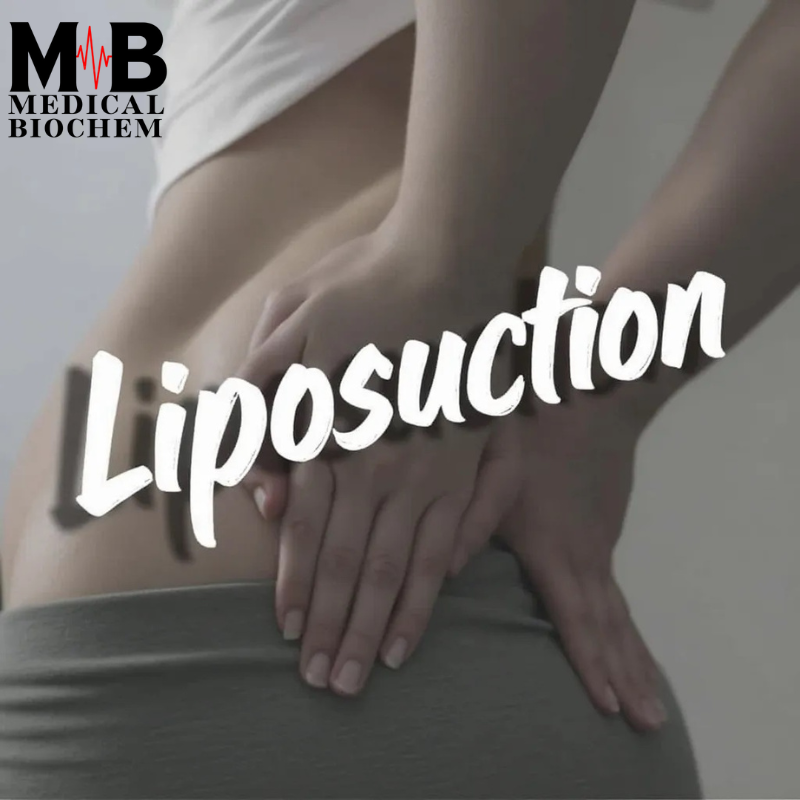Liposuction: Complete Guide to Transform Your Body
Are you struggling to lose stubborn fat that doesn’t seem to disappear, no matter how much you diet or exercise? This persistent fat can be frustrating, affecting your self-confidence and making you feel as though all your hard work isn’t paying off. Liposuction could be the solution you’re seeking. You can target those hard-to-lose areas with a proven procedure, achieving the body contours you desire.
Want to learn more about how this could work for you? Read on to discover everything you need to know before considering the procedure.
Table of Contents
What Is Liposuction?
Liposuction, sometimes called lipo, is a cosmetic surgery procedure designed to remove excess fat from specific areas of the body. The aim is not weight loss but body contouring. By targeting localized fat deposits, this helps reshape parts of the body that haven’t responded well to diet and exercise. Areas such as the abdomen, thighs, arms, buttocks, and even the face typically undergo the performance of the procedure.
While this can help improve your body shape, it’s important to understand that it isn’t a substitute for a healthy lifestyle. This works best for people close to their ideal weight, who have stubborn fat pockets that are resistant to lifestyle changes.

Types of Liposuction Techniques
1. Tumescent Liposuction
Tumescent lipid suction is the most common technique. It involves injecting a saline solution mixed with lidocaine and epinephrine into the target area. The saline solution helps to loosen the fat, making it easier to remove. Lidocaine acts as a local anesthetic, while epinephrine helps to minimize blood loss during the procedure.
2. Ultrasound-Assisted Liposuction (UAL)
In ultrasound-assisted lipid suction, ultrasonic energy is used to liquefy fat cells. The ultrasound vibrations break down the fat, which is then suctioned out. This technique is particularly useful for fibrous areas of the body, such as the upper back.
3. Laser-Assisted Liposuction (SmartLipo)
Laser-assisted lipid suction uses laser energy to liquefy fat cells before removal. The laser helps break up fat and can promote skin tightening in the treated area. This method may be ideal for people looking for smaller, more targeted areas of fat reduction.
4. Power-Assisted Liposuction (PAL)
Power-assisted lipid suction uses a specialized tool that rapidly vibrates, making it easier for the surgeon to break up and remove fat cells. When a more precise approach is required or larger volumes of fat are targeted, PAL is particularly effective.
Who Is a Good Candidate for Liposuction?
Liposuction is ideal for individuals who have stubborn fat deposits that haven’t responded to diet or exercise. Typically, good candidates:
- Are within 30% of their ideal body weight
- Have good skin elasticity and muscle tone
- Are nonsmokers
- Have realistic expectations about what lipid suction can achieve
It’s not an effective treatment for cellulite or obesity. It’s critical to discuss with a qualified surgeon to determine whether this is the right option for your needs and to align expectations with the potential outcomes.
Common Areas for Liposuction Treatment
Liposuction can target several parts of the body where fat tends to accumulate. Some of the most common areas include:
- Abdomen and Waist: The abdomen is one of the most frequently treated areas, especially for those who want to contour their waistline.
- Thighs: This can help reduce both inner and outer thigh fat, contributing to a slimmer appearance.
- Arms: The upper arms can be challenging to tone with exercise, and lipid suction offers an effective solution.
- Chin and Neck: For those concerned with excess fat around the jawline, lipid suction can define the chin and enhance facial features.
- Back: Excess fat in the back area can be hard to target, but lipid suction can help remove these stubborn fat pockets.
Liposuction Procedure: What to Expect
The lipid suction procedure is generally performed on an outpatient basis, allowing you to go home the same day. It involves the following steps:
- Anesthesia: The size of the area and the technique used will determine the administration of local or general anesthesia.
- Incision: The surgeon makes small incisions in the targeted areas, typically in inconspicuous places.
- Fat Removal: A cannula (a thin tube) is inserted through the incision. The cannula loosens the fat, which is then removed using suction.
- Closing the Incision: The small incisions are either left open for better drainage or closed with stitches.
The length of the procedure depends on the size and number of areas being treated but typically lasts 1 to 4 hours.
Risks and Potential Complications
Although lipid suction is generally safe when performed by an experienced plastic surgeon, it’s important to be aware of potential risks:
- Bruising and Swelling: It’s common to experience bruising and swelling, which may take several weeks to subside.
- Infection: As with any surgery, there is a risk of infection.
- Irregular Contour: In some cases, the skin may look bumpy or uneven after healing.
- Fluid Accumulation: Fluids can build up under the skin and may require drainage.
- Numbness: Some patients experience temporary numbness in the treated areas.
It’s crucial to follow all post-operative instructions given by your surgeon to minimize these risks.
Recovery and Aftercare
Recovery from liposuction will vary depending on the extent of the procedure. Typically:
- Initial Recovery: You may feel some pain and discomfort, which can be managed with prescribed pain medication. Compression garments are usually worn to help control swelling and support the skin as it heals.
- Returning to Normal Activities: Patients can return to work within a few days, but they should avoid strenuous activities for about 4 to 6 weeks.
- Long-term Recovery: Swelling can take several months to fully subside. Final results may not be apparent until 3 to 6 months after surgery.
To maintain the results of lipid suction, it’s important to maintain a healthy diet and exercise regularly. Lipid suction is effective at removing fat, but it cannot prevent new fat from accumulating in untreated areas.
Cost of Liposuction
The cost of lipid suction varies widely based on several factors, including:
- The geographic location of the clinic
- The experience of the surgeon
- The size and number of areas being treated
In the United States, the average cost ranges from $2,000 to $7,000 per area. However, this doesn’t typically include additional fees such as anesthesia and operating room costs.
It’s important to choose a board-certified surgeon with significant experience in this technique to ensure the best possible results. Sometimes, more affordable options can compromise quality and safety.
Alternatives to Liposuction
If you’re unsure whether lipid suction is right for you, there are several non-surgical alternatives:
- CoolSculpting: This procedure uses cryolipolysis to freeze and break down fat cells without surgery.
- Radiofrequency Treatments: Treatments like Vanquish use radiofrequency to heat and destroy fat cells.
- Injection Lipolysis: This involves injecting a chemical solution to dissolve fat. Kybella is one example, specifically used for the double chin.
These alternatives are less invasive but may not provide as dramatic results as traditional lipid suction. Discussing your goals with a medical professional will help you determine the best approach.
Final Thoughts on Liposuction
Liposuction is an effective method for contouring specific areas of the body and eliminating stubborn fat deposits that haven’t responded to diet or exercise. It’s not a substitute for weight loss but rather a tool for enhancing your shape and achieving your ideal body contour.
Understanding the procedures, risks, costs, and recovery involved in this will help you make an informed decision. Always consult a qualified, board-certified plastic surgeon to discuss whether you’re a good candidate for the procedure and to explore your expectations.
Interested in learning more about liposuction and whether it’s the right option for you? Consult with an expert today and take the first step toward achieving your ideal body shape.


